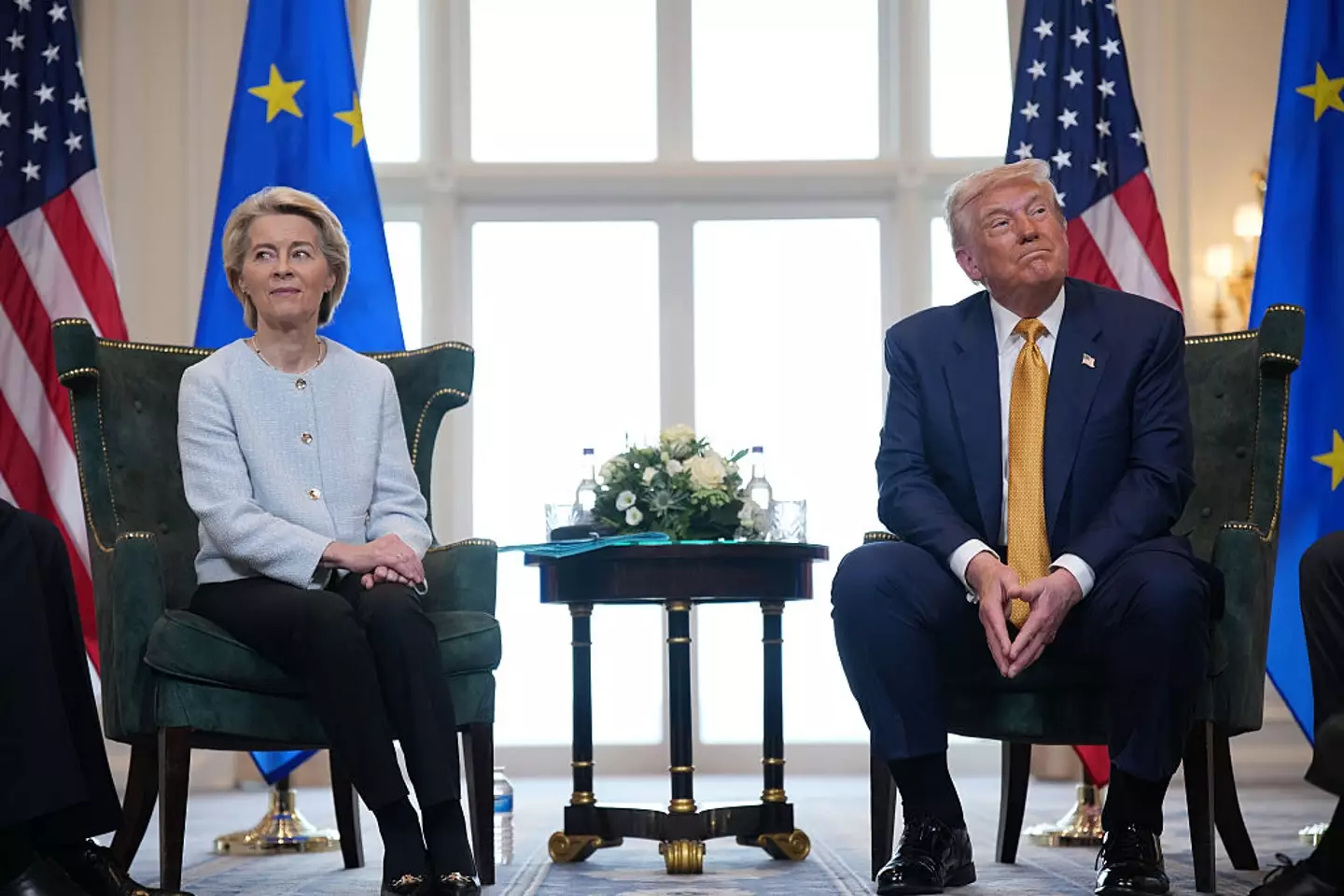After extended negotiations, the United States and the European Union have reached an accord regarding tariffs.
President Trump hailed the agreement as the ‘biggest deal ever made’, following a crucial meeting with Ursula von der Leyen during his private visit to Scotland.
The deal stipulates that all 28 EU member countries will now encounter a 15 percent tariff on a range of goods, such as cars, semiconductors, and pharmaceuticals, rather than the 30 percent tariff previously threatened by the US President.
EU Commission President von der Leyen remarked that the deal would bring ‘certainty in uncertain times’ for both citizens and businesses.
The agreement outlines ‘zero for zero’ tariffs on several products, including aircraft, certain agricultural commodities, and specific chemicals. Additionally, the EU will purchase $750 billion worth of US energy over a three-year period.

The leaders convened at Trump’s Turnberry golf resort in Ayrshire on July 27 to outline the agreement’s main components, with detailed provisions to be developed in the coming weeks.
Prior to their roughly hour-long talks, Trump had indicated there was a ’50-50′ probability of reaching a deal due to several unresolved issues.
Post-meeting, Trump stated: “I think it’s great that we made a deal today instead of playing games and maybe not making a deal at all. I think it’s the biggest deal ever made.”
von der Leyen added: “Today’s deal creates certainty in uncertain times, it delivers stability and predictability for citizens on both sides of the Atlantic.”
Although von der Leyen and Trump expressed satisfaction with the meeting’s outcome, the American public is less enthusiastic about the results.

Even though EU nations are subjected to the 15 percent tariffs on their exports, it is likely that American consumers will bear the cost.
On Twitter, one user commented: “The European Union isn’t going to pay 15% of anything. US consumers are going to pay 15% on everything coming from Europe.”
Another user clarified: “It’s not that hard to explain — the 15% tariff is a tax on Americans, not Europeans,” adding that “When the U.S. imposes a 15% tariff on EU imports, it’s American businesses and consumers who pay more for goods like machinery, cars, wine, and cheese. Meanwhile, the EU drops tariffs to 0% on American imports, meaning Europeans get cheaper U.S. products.”
According to The Guardian, US exports to the EU, including cars, currently taxed at 10 percent, will become duty-free starting Friday.

